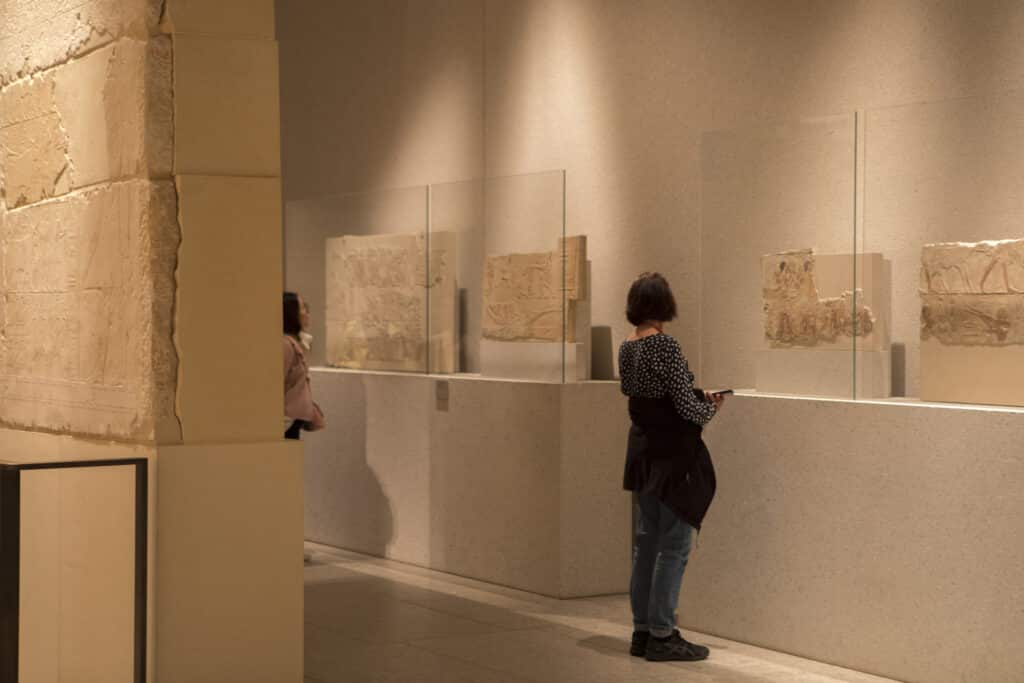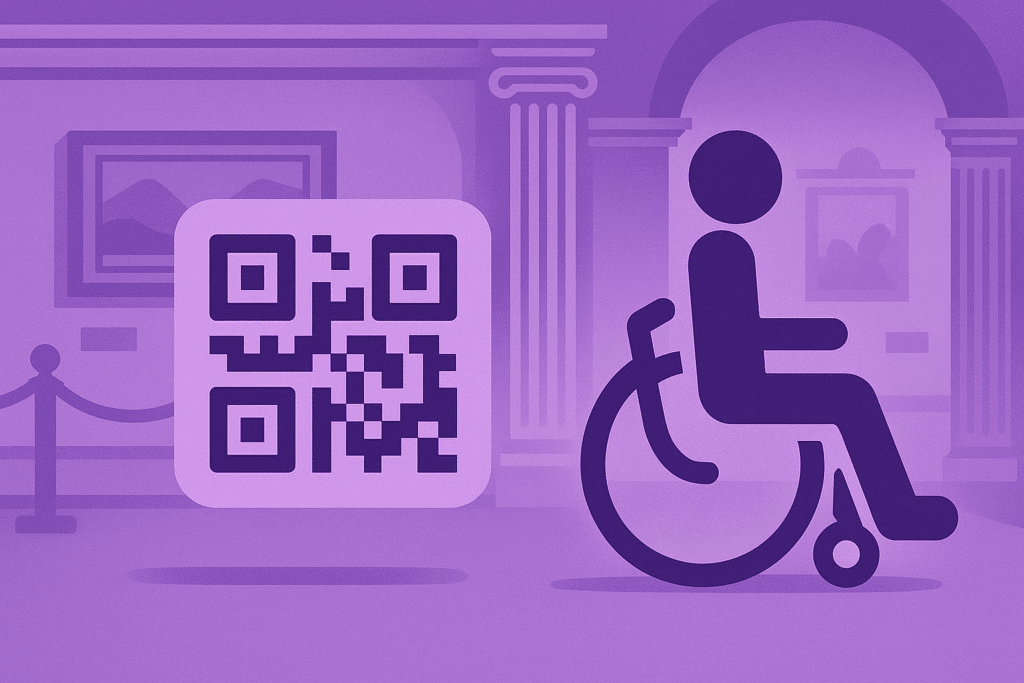Accessibility in Cultural Venues: a Necessary Digital Transformation
Today more than ever, talking about accessibility in cultural venues means going beyond traditional architectural barriers. Digital accessibility is the new watershed between inclusion and exclusion. And it’s not just a matter of equity, but also of the quality of the cultural experience.
Accessibility in Museums: UX, Technologies, and International Guidelines
Talking about accessibility in museums today means talking about user experience (UX), inclusive technologies, and compliance with WCAG 2.1 (Web Content Accessibility Guidelines).
The WCAG 2.1 establish clear criteria for designing websites and apps accessible to people with visual, auditory, cognitive, or motor disabilities. For example:
- Perceivability: images described with alternative texts, subtitles for videos.
- Usability: interfaces navigable even without a mouse.
- Comprehensibility: clear language and predictability of commands.
- Robustness: compatibility with assistive software such as screen readers.
Inclusion starts here: from the ability to plan a cultural visit without obstacles, directly from your smartphone.

Audio Guides and Museum Apps: Examples of Sensory Inclusion
Today, audio guides, especially when integrated with mobile apps, represent a powerful tool to ensure accessibility in museums. Not only for blind or visually impaired people but also for those with cognitive or language barriers.
Technologies like iBeacon, NFC, and QR codes allow for activating personalized audio content depending on the user’s position. For example, a visitor can receive a detailed description of the artwork simply by approaching it.
A virtuous example is represented by the SMART (Small Museums Alliance Representing Territories) project, co-financed by Interreg Italy-Austria, which has transformed small museums in the Alpine area into digital accessibility laboratories.
Among the results:
- accessible web-based audio guides;
- virtual tours with multimedia content;
- redundant information panels (audio, texts, tactile);
- digital content accessible via app even remotely.
This technology improves the experience for all visitors, not just those with disabilities: a clear example of universal design.
Inclusion and Digital Accessibility: a Strategy for the Future
Inclusion in culture is not just an ethical value, but a strategic lever for tourism. Investing in digital accessibility means expanding the potential audience, differentiating the offer, and improving the museum’s reputation.
One of the strengths of the SMART project was precisely the involvement of users in the co-design phase, through tools such as the participatory theater Silent Play and interactive narrative paths, accessible even to deaf or visually impaired users.
In addition to this, there are tools already in use in some cutting-edge museums. An example is amuseapp that allows offering multilingual and customized audio guides for different visitor targets, audio transcriptions, subtitles, simplified texts, gamification features to increase engagement and “interactivity. amuseapp is also testing a LIS guide feature to make the cultural experience increasingly inclusive.”
Websites and Tourist Portals: the First Threshold of Inclusion
An inaccessible website is a door slammed in your face. For this reason,accessibility in cultural venues necessarily passes through intuitive websites and tourist portals.
In digital cultural tourism, the experience begins with online search: schedules, tickets, access, services, audio guides. The lack of this information in an accessible format creates an invisible but powerful barrier.
It is therefore essential to:
- use clear language;
- avoid inserting visual content without adequate textual description;
- offer alternative versions of multimedia content;
- collect feedback on the user experience from people with different disabilities.
EU legislation (Directive 2016/2102) and Legislative Decree 106/2018 in Italy require public entities to comply with these criteria. But more than an obligation, it’s an opportunity: to offer culture without barriers, to everyone.
Amuseapp: Technology and Storytelling at the Service of Accessibility
In an ever-evolving context, tools like amuseapp play a key role. With its features based on geolocation, smart notifications, accessible audio guides and customizable content, amuseapp allows museums and cultural sites to offer an inclusive, engaging experience that aligns with international guidelines.
Whether it’s making hidden heritage accessible or narrating a temporary exhibition, amuseapp puts accessibility at the heart of the narrative.
Conclusion
Accessibility in cultural venues can no longer be confined to ramps and elevators. It’s a matter of digital rights, active inclusion, accessible and meaningful experiences. It’s a cultural, economic, and social investment.
The digital transformation has already begun. It’s time to take the next step.
Why Amuseapp is the Choice of Innovative Museums
amuseapp is more than just an audio guide-it is an innovative digital platform that transforms the visitor experience and helps museums increase revenues.
Customized itineraries with theArtificial Intelligence. Unlike traditional audio guides, amuseapp uses artificial intelligence to create customized itineraries based on the needs of each visitor: children, people with sensory disabilities, experts, students, and many other categories.
Accessibility in 47 languages. Today, only 20 percent of museums offer content in more than two languages. With amuseapp, cultural venues can break down this barrier, automatically generating text and audio in 30 languages and making cultural heritage accessible to everyone, everywhere.
Chatbot real-time virtual tour guide. Using a customized chatbot, amuseapp offers visitors an always-available virtual guide who can answer their questions and enrich the visitor experience.
Easy and safe donation collection. With amuseapp, cultural places can collect donations directly through the app, quickly, securely and intuitively.
Feedback for continuous improvement. amuseapp allows you to collect visitors’ opinions about the visitor experience, providing valuable data to optimize your services.
Available in app or web app mode. The amuseapp web app allows visitors to access the museum’s digital content without having to download any apps. The amuseapp mobile app is designed to offer a more advanced and customizable experience. By downloading it from the official stores, visitors can benefit from extra features.
One solution, multiple benefits. With amuseapp, cultural venues can offer an innovative, inclusive and interactive experience while improving their sustainability model.
Learn more about amuseapp.
Do you have a museum and want to find out how to provide the best digital experience for your visitors?
👉 Contact us!

